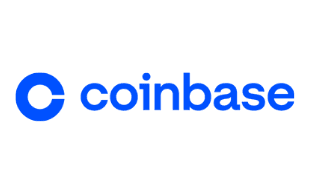Gemini Cryptocurrency Exchange

- Trade SOL and 80 other cryptos.
- Platform designed for traders of all experience levels
- Get $25 in Bitcoin when you trade $100 with code Finder25
Gemini Cryptocurrency Exchange

Solana (SOL) catapulted into the spotlight in 2021 by presenting itself as a high-speed competitor to Ethereum, which helped SOL reach an all-time-high price of $293.31 in January 2025.
While this has helped make SOL the #6 crypto by market cap, Solana is still a highly volatile asset capable of major price swings in a single day.
Just take a look at today's SOL price of $160.05, which is significantly up from yesterday's trading price of $146.20. Solana's seen an increase of 9% over the past year.
So before you buy Solana, make sure you understand these unique risks as well as its legal, regulatory and tax status here in the US.
If you're ready to get started, read on for step-by-step instructions and a list of platforms you can use to buy Solana in the US.
To buy SOL, all you'll need is a smartphone or computer, an internet connection, photo identification and a way to pay.
Promoted

Promoted

Promoted

Promoted

Disclaimer: This page is not financial advice or an endorsement of digital assets, providers or services. Digital assets are volatile and risky, and past performance is no guarantee of future results. Potential regulations or policies can affect their availability and services provided. Talk with a financial professional before making a decision. Finder or the author may own cryptocurrency discussed on this page.
If this is your first time buying cryptocurrency look for a platform that accepts US dollars, like Gemini or Public.
Don't worry too much about extra features or coins for now – you can always sign up with another exchange later.
Use the table to choose a platform that meets your needs and click the Go to site button to get started.
Are you visiting from outside the US?
Founded in 2017, Solana (SOL) is an open-source blockchain platform designed to host decentralized and scalable applications.
It grew in popularity rapidly during the 2020 bull run as an Ethereum alternative layer-1 blockchain. Solana's network is significantly faster than Ethereum's due to its unique proof-of-history (PoH) technology. PoH allows transactions to be time stamped and processed quickly while its PoS consensus verifies the transactions and adds blocks to the blockchain.
Solana can process an estimated 50,000 transactions per second (TPS), far more than Ethereum's 10–15 TPS.
While this seems like a drastic improvement, Solana has been scrutinised with suggestions that – unlike Ethereum – its blockchain compromises decentralization and security in f of speed.
These concerns were amplified when Solana experienced multiple network outages throughout 2022, halting block production for several hours.
Read our beginner's guide to how Solana worksTo create an account with your chosen crypto platform, you only need an email address or mobile number. This will usually allow you to deposit cryptocurrency, but not USD.
If you want to buy Solana with US dollars, you'll need to pass a Know Your Customer (KYC) check.
This is a standard security procedure for most exchanges in the US and requires you to upload some photo ID, and in some cases a selfie with today's date.
KYC is usually approved instantly, but in rare cases, you may have to wait a few hours or days.
Once you've set up your account, you'll need to deposit funds to buy Solana with. We've listed some popular ways to buy SOL and what you should know about each payment method.
Most exchanges let you buy as little as $5 worth of SOL, if not less. Just type in how much you want to spend in USD and let the exchange work out the rest.
Some platforms only offer 1 way to buy Solana, while others provide several choices. The 2 most common ways to buy SOL are on the spot market or with an "instant buy" feature.
If it's your first time buying Solana, this will be the fastest method – but also the least cost-effective.
The instant buy section is usually located under a "Buy now" heading on the platform you've chosen.
It should feature a simple interface that lets you enter the amount of Solana you want to buy or US dollars you want to spend.
This is usually the only option available for credit or debit card purchases, but you may also be able to make an instant buy if you've pre-funded your account with a bank transfer.
Be prepared to pay a markup on SOL's market rate in exchange for the convenience.
If you see colorful charts with a range of prices, you're probably in the spot market.
The spot market is where buyers and sellers come together to place bids for SOL on the open market. It's usually the cheapest way to buy Solana because it lets traders set their own prices.
You'll find the spot market under a "Trade" or "Spot" heading on the site or app menu of the platform you've chosen to use.
There are several different order types that you can make on the spot market.
There are dozens of different trading platforms to choose from when buying Solana in the US, so to help you find your best option, keep these factors in mind:
Crypto exchanges founded and based in the US are required to register with the Financial Crimes Enforcement Network (FinCEN), a division of the US Department of the Treasury. This bureau safeguards the US financial system by working to prevent money laundering, terrorist-financing activity and other financial crimes.
FinCEN-registered exchanges contribute to a more secure financial system in the US and provide you with better consumer protections compared to exchanges based in other countries.
Other reasons for using a FinCEN-registered exchange may include the following:
You shouldn't invest in any asset, including SOL, without doing plenty of research first. Before you buy Solana, make sure you understand and weigh up these risks:
Solana (SOL) is set to end 2022 at $35, according to Finder's panel of fintech specialists. Going forward, the panel is projecting SOL to be worth around $116 in 2025 before rising to $236 by 2030.
All the content may be republished with a link to this page
Press enquiries
Compare today's price of Solana ($160.05 USD) against its all-time high (ATH) price of $293.31 USD on January 19, 2025. The closer the bar is to 100%, the closer SOL is to reaching its ATH again.
If you hold Solana as an investment, you'll be taxed on any capital gains you make when you sell it — which includes spending it on goods and/or services. In the US, tax obligations also apply to mining, professional Solana trading and in a range of other scenarios, so make sure you're fully aware of what you need to report to the IRS.
Use our round-up of the best crypto tax software to make tax reporting easier.
If you want to buy Solana, start by comparing a range of crypto brokers and exchanges available in the US. Look at their features, fees, security and overall reputation to decide which platform is right for you. Use an exchange registered with FinCEN for added peace of mind.
Remember that owning and using Solana is not without its risks. Carefully consider investing in SOL as part of a wider strategy, and talk to a financial advisor if you have any questions.
Once you've bought some SOL, think about your short and long-term goals. This will help you decide whether to keep it on an exchange or move it to your own wallet.
Unfortunately, there's no way to know for certain if any asset is a good investment, but there are some things you can do to help build an informed opinion.
Read our expert SOL price prediction as part of your due diligence process to help decide whether the risks of investing in Solana align with your investment objectives.
Lots of crypto trading platforms can help you buy Solana with USD, including Gemini and Public.
Check out the full list of exchanges in our comparison table.
There are a handful of ways to earn small amounts of free SOL, including playing online games or using a crypto rewards credit card.
A much more common approach is to stake SOL you already own or lend it to a platform like Nexo to earn a yield.
Read our guide on how to earn free crypto for other potential ways to earn some free Solana.
We've compared 13 trading platforms and exchanges in the US that sell SOL, including Gemini and Public.
Check out the full list of exchanges that sell SOL in our table.
Whether products shown are available to you is subject to individual provider sole approval and discretion in accordance with the eligibility criteria and T&Cs on the provider website.
Disclaimer: Cryptocurrencies, including Solana, are speculative, complex and involve significant risks – they are highly volatile and sensitive to secondary activity. Performance is unpredictable and past performance of SOL is no guarantee of future performance. Consider your own circumstances, and obtain your own advice, before relying on this information. You should also verify the nature of any product or service (including its legal status and relevant regulatory requirements) and consult the relevant Regulators' websites before making any decision. Finder, or the author, may have holdings in the Solana or any other cryptocurrency discussed.
This guide provides step-by-step instructions on how to buy POL, lists some exchanges where you can get it and provides daily price data on (POL).
This guide provides step-by-step instructions on how to buy Pepe, lists some exchanges where you can get it and provides daily price data on (PEPE).
This guide provides step-by-step instructions on how to buy TRON, lists some exchanges where you can get it and provides daily price data on (TRX).
This guide provides step-by-step instructions on how to buy IOTA, lists some exchanges where you can get it and provides daily price data on (MIOTA).
This guide provides step-by-step instructions on how to buy Stellar, lists some exchanges where you can get it and provides daily price data on (XLM).
This guide provides step-by-step instructions on how to buy Bitcoin Cash, lists some exchanges where you can get it and provides daily price data on (BCH).
This guide provides step-by-step instructions on how to buy Bitcoin Gold, lists some exchanges where you can get it and provides daily price data on (BTG).
Learn how to sell Dogecoin in 3 simple steps.
Learn how to buy Cardano in the US with our simple step-by-step guide and tips on what to know before you get started.
Learn how to buy Litecoin in the US with our simple step-by-step guide and tips on what to know before you get started.